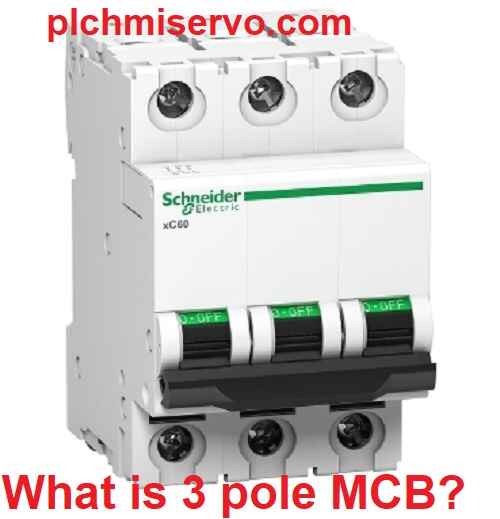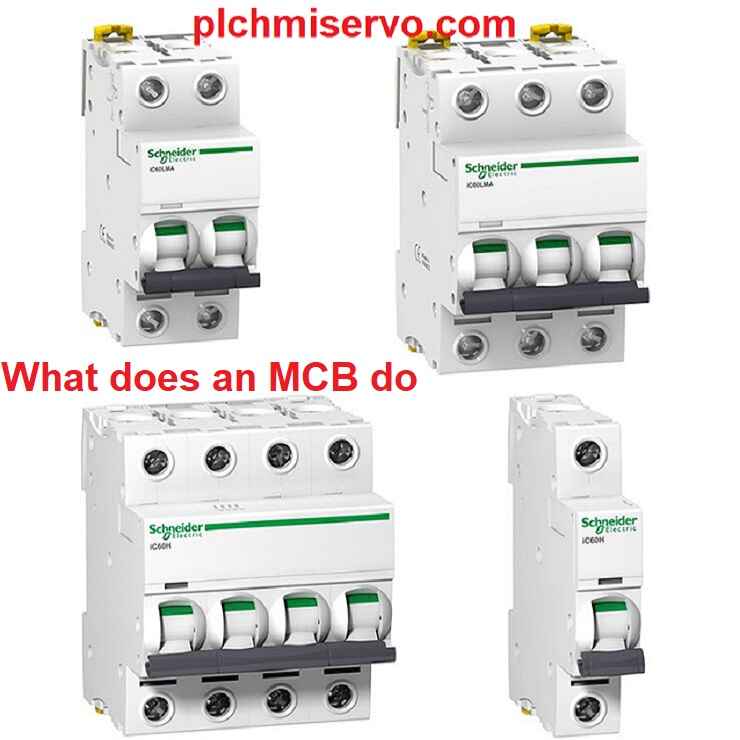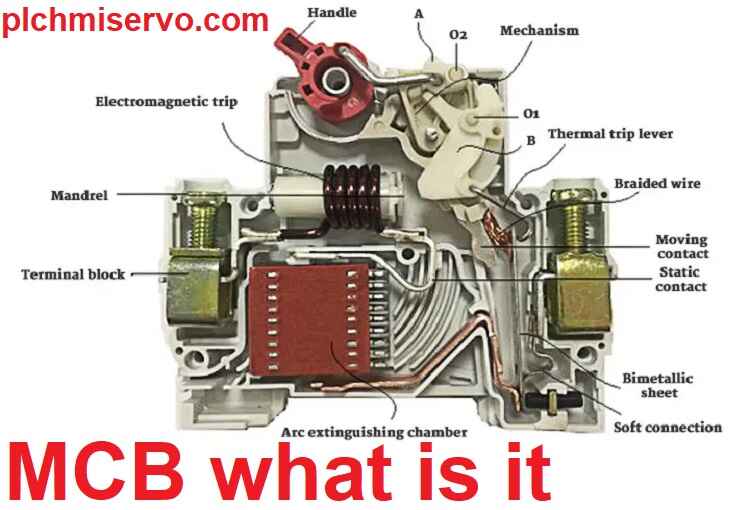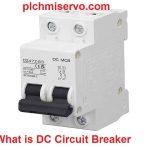MCB what is it & What does an MCB do
Have you ever considered the consequences of a short circuit or power surge on your household appliances such as fans, washing machines, ovens, and refrigerators? These devices can get damaged and even cause fires if they do not have proper circuit breakers installed. An MCB (Miniature Circuit Breaker) is a safety device with an electro-mechanical mechanism that helps prevent these issues.
An MCB acts as a guardian for electrical circuits, protecting them from too much current. This over or extra current can be caused by either a circuit being overloaded or by a short circuit. In the past, fuse wires were commonly used for this purpose, with the wire breaking and cutting off the electrical connection in case of over-current. However, MCBs offer a more advanced and convenient solution, as they can be quickly reset and reused without needing to be replaced like fuse wires, for what is dc breakers?
MCBs also offer a more cost-effective solution compared to traditional fuse wires. Because they are low-maintenance. MCBs have 3 main aspects: how much current they can handle normally (amps), their ability to withstand sudden surges of current (kiloamps), and how quickly they react to overload situations (tripping curve). These aspects determine their functionality in different situations. They are designed to automatically disconnect the circuit when excessive current flows through it, providing a quick and easy way to isolate and identify faults in the system.
Their bi-metal and solenoid mechanisms help protect against overload and short circuit currents, making them an essential safety device for any electrical circuit. The plastic case around MCBs acts as an insulator, making them much safer to handle by preventing accidental contact with live wires. While MCBs can protect against over-current situations, it is important to note that they do not protect against electrical shocks caused by earth leakage. For this purpose, Residual-Current Devices (RCDs) and Residual-Current Circuit Breakers with Overload protection (RCBOs) are used. You can see the what is X-former, click here and see the details
What is 3 pole miniature circuit breaker

The 3 pole MCB or miniature circuit breaker is a three-phase electrical systems, which are typically found in large buildings and industrial settings. These systems use three separate AC currents. To keep things safe, the MCB has dedicated poles to control and protect each current. By being able to interrupt the circuit in all three phases simultaneously, a 3 pole breaker offers comprehensive protection against overloads and short circuits.
In instances where a three-phase electrical supply is required, a Triple (3) Pole MCB is the ideal choice. With 415VAC being delivered through three hot wires, it necessitates three separate switches in order to effectively manage the flow of electricity. Industrial and commercial settings are the primary areas where 3-Pole Live Electrical MCB Circuit Breakers find their application. They ensure reliable protection from both circuits carrying more current than intended and unexpected electrical shortcuts.
Ideal for three-phase systems, these supercharged 3 pole MCBs ensure reliable and efficient safeguarding of your electrical infrastructure. MCBs combine ease of installation with long-lasting durability, providing exceptional circuit protection that boosts both safety and electrical system performance. With a sleek white color and a capacity of 63A at AC 415V, these MCBs are made of durable PVC material, making them suitable for use in both homes and office spaces. So, upgrade your electrical systems now with Live Electrical 3 Pole MCB Circuit Breakers for superior protection and peace of mind.
What does an MCB do

The MCB (Miniature Circuit Breaker) is a crucial electrical safety device composed of several key components, each serving a specific purpose in its operation. An MCB typically does the following functions through its key components:
1. Latch: The central mechanism that holds the contacts closed during normal operation and releases them when a fault is detected.
2. Solenoid: An electromagnetic component that activates during short circuit conditions.
3. Switch: The manual on/off control for the MCB.
4. Plunger: A movable component that works in conjunction with the solenoid during short circuit protection.
5. Incoming Terminal: The point where the power supply connects to the MCB.
6. Arc Chutes Holder: Supports the arc chutes, which help extinguish electrical arcs.
7. Arc Chutes: Designed to quickly dissipate the electrical arc formed when contacts separate.
8. Dynamic Contact: The movable contact that breaks away from the fixed contact to stop the current.
9. Fixed Contact: The stationary contact where the moving contact meets to complete the circuit.
10. Din Rail Holder: Allows for easy mounting of the MCB in electrical panels.
11. Outgoing Terminal: The point where the protected circuit connects to the MCB.
12. Bi-metallic Strip Carrier: Holds and supports the bi-metallic strip.
13. Bi-metallic Strip: A key component for overload protection.
The MCB provides two primary forms of protection:
+1: Overload Protection
The bi-metallic strip (component 13) is the heart of the overload protection mechanism. During a prolonged overcurrent situation typical of an overload, the strip heats up due to the increased current flow. Increase in temperature causes the bi-metallic strip to bend due to the varying expansion rates of its constituent metals. As the bend in the strip becomes significant enough, it releases the latch mechanism. This triggers the contacts to disconnect, interrupting the current flow of circuit and safeguarding connected equipment from overheating.
+2: Short Circuit Protection
A short circuit causes a surge in current, a rapid and significant jump. This rapid surge activates the solenoid (component 2), which causes the plunger (component 4) to move quickly. When the plunger strikes, it pushes the trip lever, causing the latch to disengage. This action swiftly separates the contacts, breaking the circuit almost instantaneously and preventing the potentially catastrophic effects of a short circuit.
Resetting the MCB
After the MCB has tripped due to either an overload or short circuit, it must be manually reset. When the issue is fixed, reactivating the MCB is as simple as turning back the switch to ‘ON’. Forcing a manual reset makes sure the problem is fixed before the circuit has power again.
Besides, MCBs offer several benefits over traditional fuses. They are easily resettable, require no maintenance, and can be quickly replaced if necessary. The trip unit, comprising the bi-metallic strip and electromagnet, is the core of the MCB’s protective functionality. The bi-metallic strip provides protection against overload currents, while the electromagnet (solenoid) safeguards against short circuit currents.
References:
https://www.consumerunitworld.co.uk/what-is-an-mcb-and-how-does-it-work-328-c.asp


